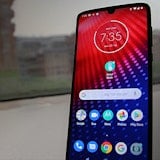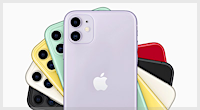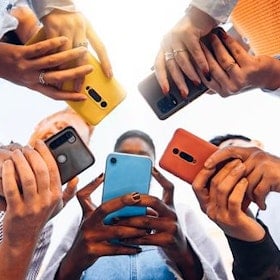
Ben Slater of Brisbane has injected himself with a microchip, allowing him to control his technological surroundings with hand gestures. The procedure was undergone in the hopes that the upcoming iPhone 6 will have compatible NFC technology, thus allowing Slater to use the chip to interface with other devices via his smartphone.
In theory, the RFID (radio frequency identification) chip could be used to do whatever an iPhone can do. Come the release of iOS 8, that will include unlocking doors, turning lights on and off, operating sound systems, transferring and saving data, and a slew of other smart-house technologies.
Slater even hopes to one day be able to activate his car’s ignition without the use of a key.
Will it work?
The technology certainly exists. All the chip itself needs to do is send a signal to a phone, which then does all of the leg-work of communicating with the other devices. Phones can already control a wide variety of household appliances, so the potential applications extend to whatever products are available. Right now that list isn’t exactly long, but its growth is picking up speed every year.
“Biohacking” has been increasing in popularity since 2004 when the US Food and Drug Administration approved marketing of human microchip implants, ostensibly for medical ID, much like how it is used in pets.
Generally, biohackers have used these RFID implants primarily for storing data, but the prospect of being a techno-sorcerer with control of a house full of gadgets and gizmos is far more appealing.
The problem with the story as it stands right now is that Slater did this in the hope that it will work, without actually having any way to implement his plans until the iPhone 6 debuts with NFC compatibility.
No worries, mate?
 Apart from the obvious issues of bodily rejection and
infection, RFID implants have been met by heavy resistance by some.
Apart from the obvious issues of bodily rejection and
infection, RFID implants have been met by heavy resistance by some.
Religious extremists have gone as far as to refer to them as “the mark of the beast”, while others are more-understandably worried over the implications for personal tracking and security.
In theory, it should be safe. RFID chips have no power source; they are only activated by RFID and NFC devices and can be locked with security permissions.
That means they can’t be made to constantly emit signals wherever you go, or be accessed by any old schmuck with a compatible gadget.
Jedi party tricks
Concerns aside, the potential to control your house with your hand is exciting, to say the least. You could bandy-about words like “inhuman” and “cyborg”, but by the same token you could call it ‘enhancement’ or ‘flipping awesome’.
Unfortunately, with the tech being in such early stages it’s unlikely to be too useful just yet. As much as the idea of waving a hand to unlock a door, or miming an ignition key turn to activate a car appeals to us, it’ll probably be a few years yet before Mr Slater’s dream comes in to full fruition.
In the meantime, at the very least, he’ll have a cool trick or two up his sleeve when unsuspecting party guests turn up for dinner.
Source: SMH
Related Articles
Find Better Phones and Plans
Hundreds of cell phone plans unpacked. All the facts. No surprises.



































